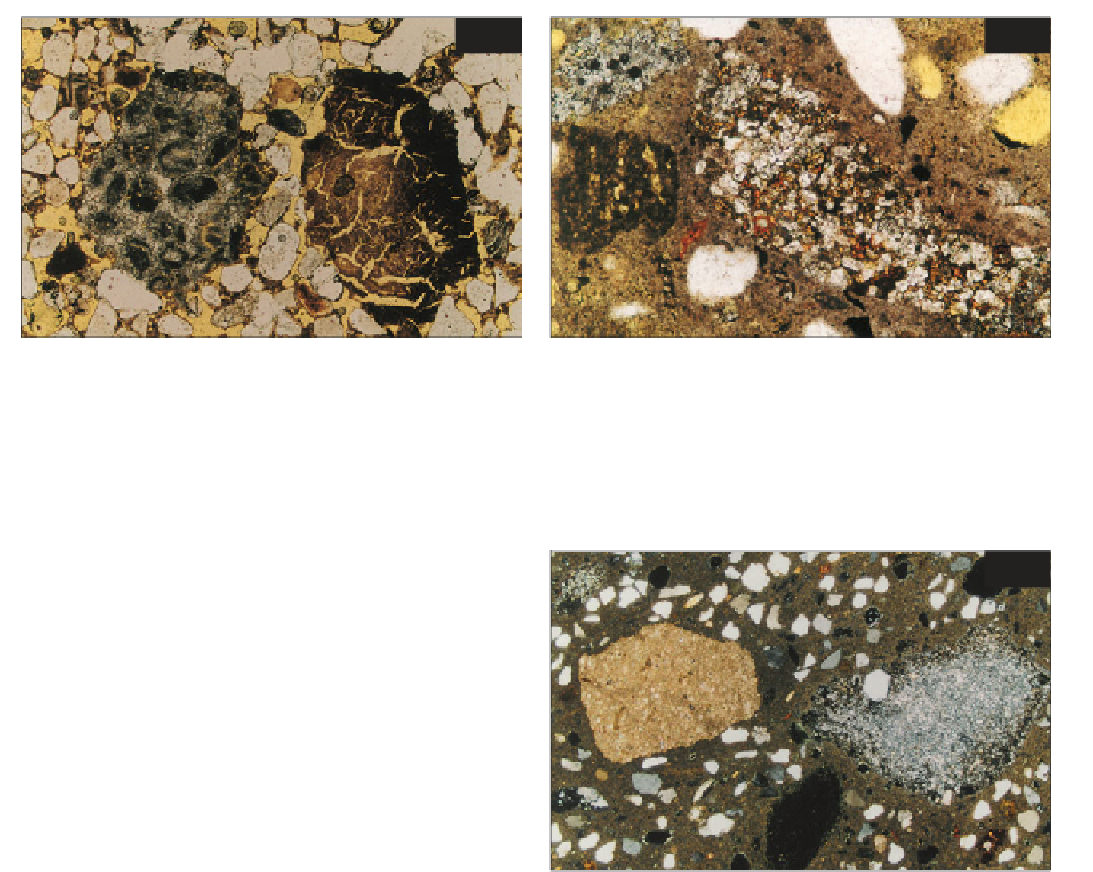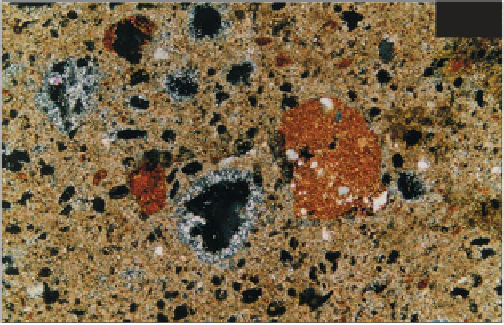Geoscience Reference
In-Depth Information
288
289
288
Inclusions of unburnt limestone (left) and an
overburnt lime lump (right) within medieval mortar
from a Welsh castle; PPT, ×35.
289
Large relict Portland cement grain (centre) within
early 20th century Portland cement/lime render,
comprising calcium silicates (white) and interstitial
phases (dark brown); PPT, ×150.
290
interstitial phases, and in the case of Portland cement, also
including tricalcium silicate (
289
). These relict cement
grains were relatively large (up to 500 μm across) in early
hydraulic cement mortars and have decreased in size with
time as clinker grinding technology has improved, with
modern Portland cement mortars having cement grains of
<30 μm in size. Lime plasters were sometimes gauged with
gypsum, which is detected optically by the presence of
finely disseminated gypsum within the matrix, large
gypsum crystals lining air voids, relict particles of
hemihydrate (bassanite), and for English gypsum sources,
clay-rich lump impurities (
290
and
291
).
290
Historic lime/gypsum plaster, showing a large
lump of hemihydrate (grey, right) from gypsum and a
lump of unburnt limestone from the lime (light brown,
left). Fine aggregate consists mainly of quartz
(white/grey) and the carbonated binder appears dark
brown; XPT, ×35.
291
291
An unusual early 20th century plaster comprising
lime gauged with both gypsum and Portland cement.
The binder has the appearance of carbonated lime
(light brown) and encloses clay-rich impurities
(red/orange). Gypsum crystals lining air voids indicate
the addition of gypsum and relict Portland cement
grains are common (small and dark brown); XPT, ×75.




